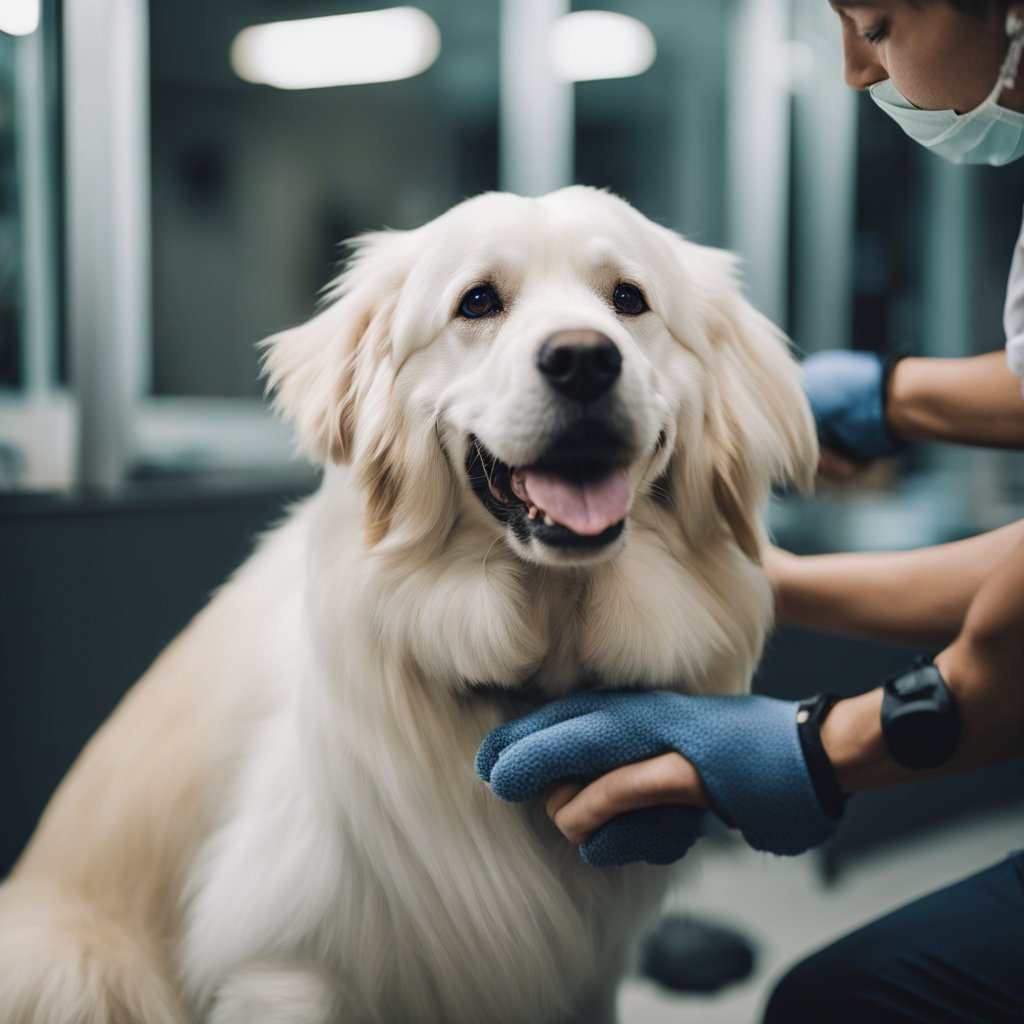Grooming Your Senior Dog: What You Need to Know
As your furry friend grows older, they require more care and attention than they did when they were younger. Senior dogs need special attention when it comes to grooming, as their coats, skin, and nails become more fragile. Grooming your senior dog not only helps them look and feel their best, but it also helps you bond with them.
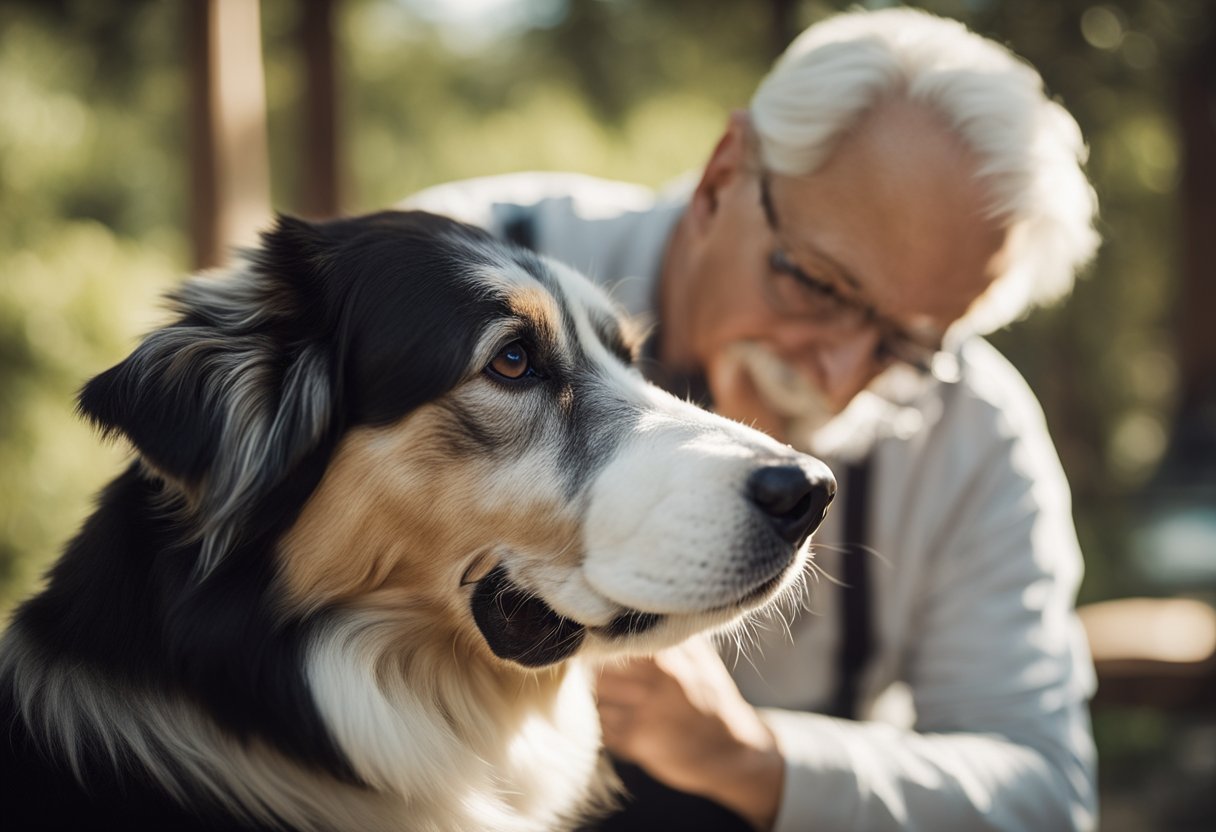
Understanding Senior Dog Needs is the first step to properly grooming your senior dog. Senior dogs have different needs than younger dogs, and their grooming routine should reflect that. For example, older dogs may have less mobility and may require a no-skid surface while being groomed. They may also have sensitive skin that requires special shampoos or conditioners. By understanding your senior dog’s needs, you can tailor their grooming routine to keep them comfortable and healthy.
Grooming Techniques for Senior Dogs are different from those used for younger dogs. Senior dogs require a gentle touch, and their grooming routine should be modified to accommodate their changing needs. Regular brushing, nail trimming, and ear cleaning are essential for senior dogs. However, it’s important to be gentle and patient, as older dogs may be more sensitive to touch. By using the right grooming techniques, you can help your senior dog feel their best and maintain their health.
Key Takeaways
- Understanding your senior dog’s needs is the first step to properly grooming them.
- Grooming techniques for senior dogs should be modified to accommodate their changing needs.
- Regular grooming helps your senior dog look and feel their best, while also helping you bond with them.
Understanding Senior Dog Needs
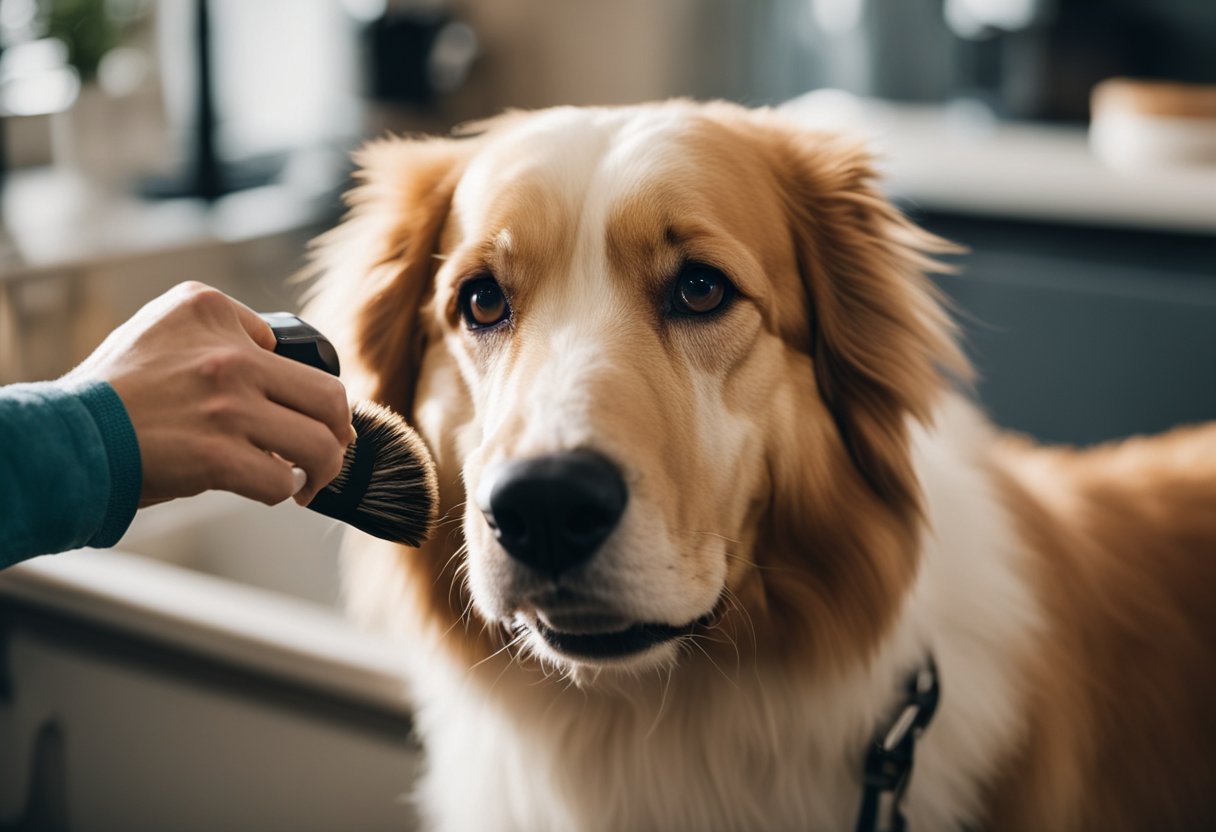
As your dog ages, their grooming needs will change. Understanding these changes will help you provide the best care for your senior dog.
Recognizing Age-Related Changes
As dogs age, they may experience changes in their coat, skin, and overall health. For example, their coat may become thinner, and their skin may become more sensitive. They may also develop age-related conditions such as arthritis or dental problems. These changes can affect how you groom your senior dog.
Adjusting Grooming Frequency
Senior dogs may need more frequent grooming than younger dogs. This is because their coat may become matted more easily, and they may develop skin conditions that require regular attention. However, you should also be careful not to over-groom your senior dog, as this can cause skin irritation.
To determine the best grooming frequency for your senior dog, consider their coat type, activity level, and overall health. For example, if your dog has a thick coat and is less active, they may need more frequent grooming than a dog with a thinner coat and a more active lifestyle.
Overall, understanding your senior dog’s needs is essential for providing the best care possible. By recognizing age-related changes and adjusting grooming frequency accordingly, you can help your senior dog stay healthy and happy.
Grooming Techniques for Senior Dogs

As your dog ages, their grooming needs will change. Senior dogs require extra care and attention during grooming to maintain their coat health and prevent skin irritation. Here are some grooming techniques to keep in mind when grooming your senior dog.
Handling Sensitive Areas
Senior dogs may have sensitive areas that require special attention during grooming. These areas may include the ears, eyes, and paws. When grooming these areas, be gentle and use caution to avoid causing discomfort or injury.
Choosing the Right Grooming Tools
Choosing the right grooming tools is essential for maintaining your senior dog’s coat health. Use a brush that is appropriate for your dog’s coat type to remove loose hair and prevent matting. A slicker brush is great for removing tangles and mats, while a bristle brush is best for short-haired dogs. Additionally, use a comb to remove any remaining tangles.
Maintaining Coat Health
Maintaining your senior dog’s coat health is crucial to their overall well-being. Regular grooming can help prevent skin irritation, matting, and other coat-related issues. Bathe your senior dog only when necessary to avoid drying out their skin. Use a gentle shampoo that is formulated for dogs and rinse thoroughly. After bathing, dry your dog’s coat with a towel or hairdryer on a low setting.
By following these grooming techniques, you can help keep your senior dog healthy and comfortable. Remember to always be gentle and patient with your furry friend, and seek professional grooming help if needed.
Resources
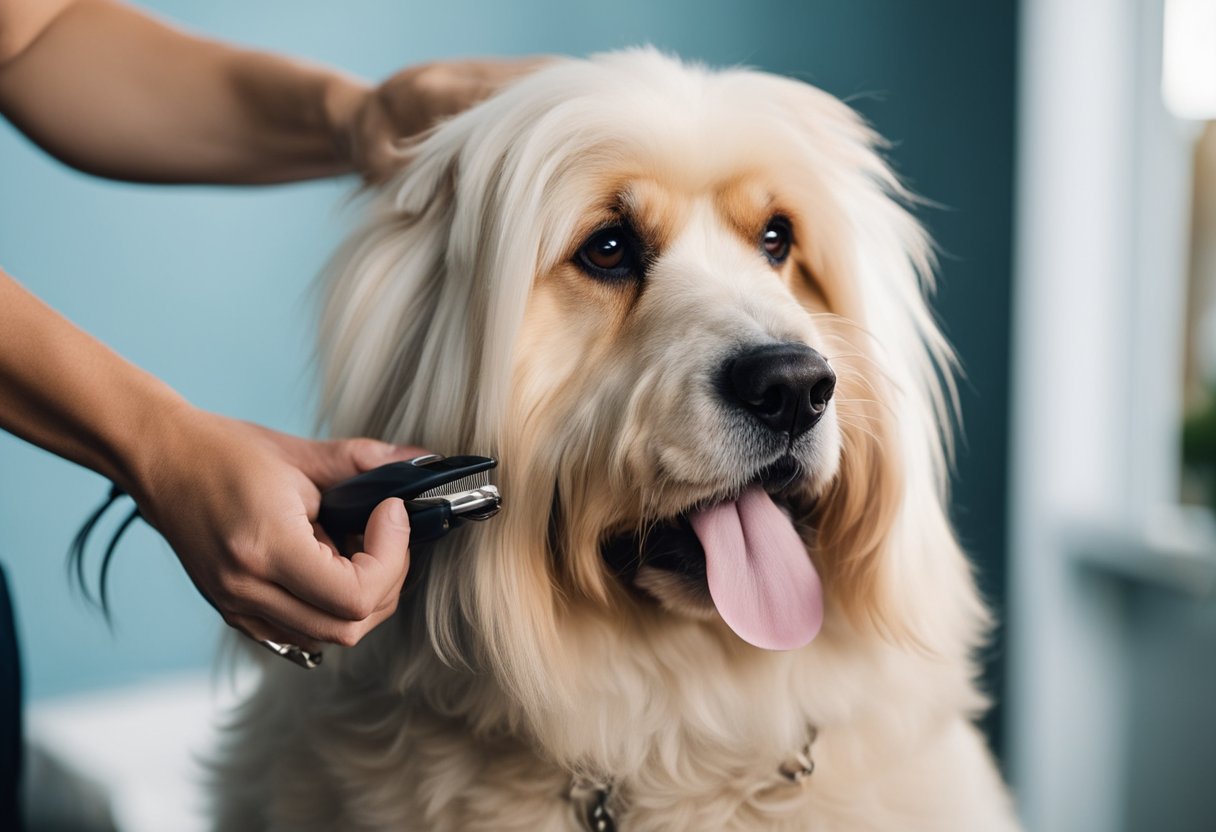
When it comes to grooming your senior dog, there are a lot of resources available to help you. Here are a few places you can turn to for guidance:
- Veterinarian: Your vet is a great resource for information on grooming your senior dog. They can give you advice on what products to use, how often to groom your dog, and what signs to look out for that may indicate a health problem.
- Professional groomer: Consider taking your senior dog to a professional groomer who has experience working with older dogs. They can help you determine the best grooming routine for your dog and provide services like nail trimming and ear cleaning.
- Online resources: There are many websites and forums dedicated to dog grooming that can provide helpful tips and advice. Some of the most popular include Dog Grooming Basics, Grooming for Senior Dogs, and Caring for a Senior Dog.
- Product reviews: Before purchasing any grooming products, it’s a good idea to read reviews from other pet owners to see what works best for senior dogs. Websites like Chewy and Petco have a wide selection of grooming products and customer reviews to help you make an informed decision.
Remember to always consult with your vet before starting a new grooming routine or using any new products on your senior dog. With the right care and attention, your senior dog can continue to look and feel their best.
Conclusion
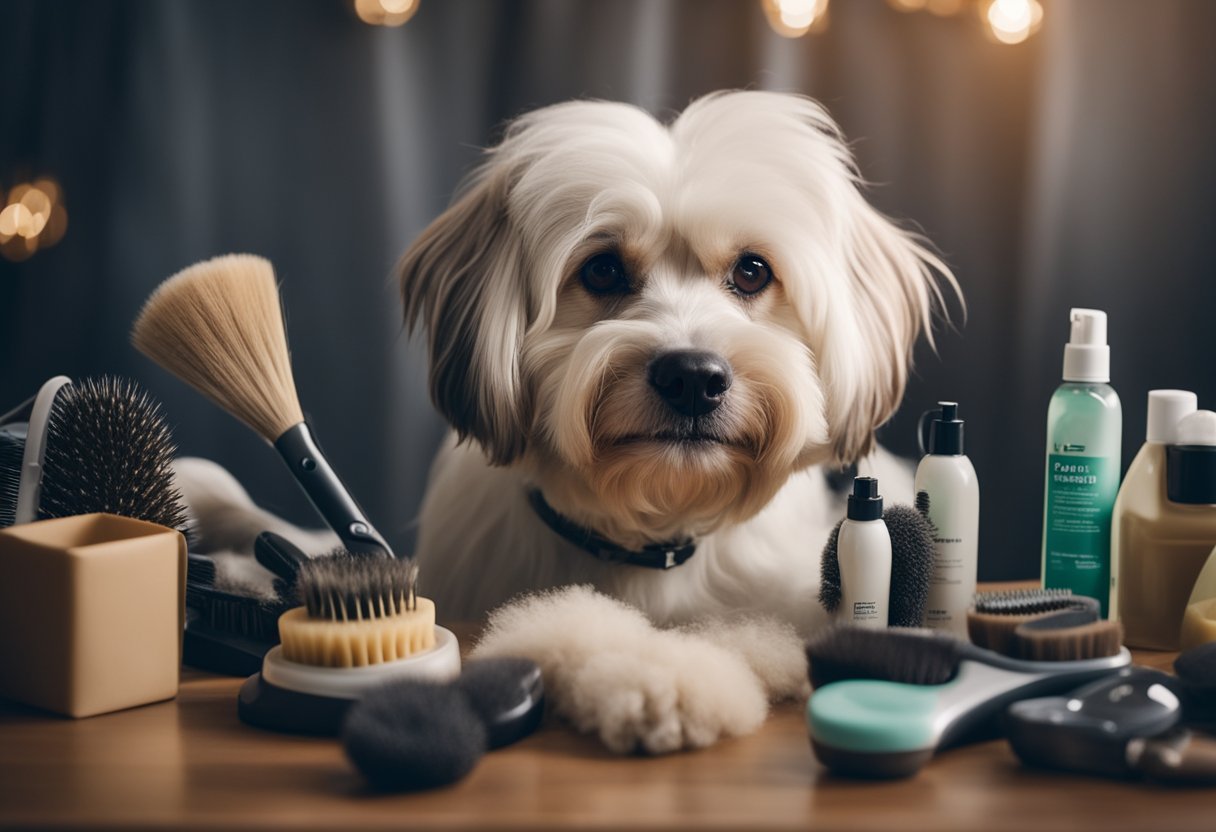
Taking care of your senior dog’s grooming needs is an essential part of their overall health and well-being. By following some basic tips, you can ensure that your senior dog looks and feels their best.
First and foremost, it’s important to tailor your grooming routine to your senior dog’s specific needs. As dogs age, they may require more frequent grooming, especially if they have health issues such as arthritis or skin conditions. It’s also important to be gentle and patient with your senior dog during grooming sessions, as they may be more sensitive or easily agitated.
Regular brushing is an important part of your senior dog’s grooming routine, as it helps to remove loose fur, prevent matting, and distribute natural oils throughout their coat. You may also want to consider using a specialized shampoo or conditioner to help keep your senior dog’s skin and coat healthy and moisturized.
In addition to brushing and bathing, it’s important to pay attention to your senior dog’s nails, teeth, and ears. Regularly trimming your dog’s nails can help prevent painful overgrowth, while prioritizing dental care can help prevent tooth decay and gum disease. Cleaning your senior dog’s ears can also help prevent infections and other issues.
Overall, grooming your senior dog is an important part of their care routine that should not be overlooked. By taking the time to understand your senior dog’s specific needs and tailoring your grooming routine accordingly, you can help ensure that they stay healthy, comfortable, and happy in their golden years.
Frequently Asked Questions
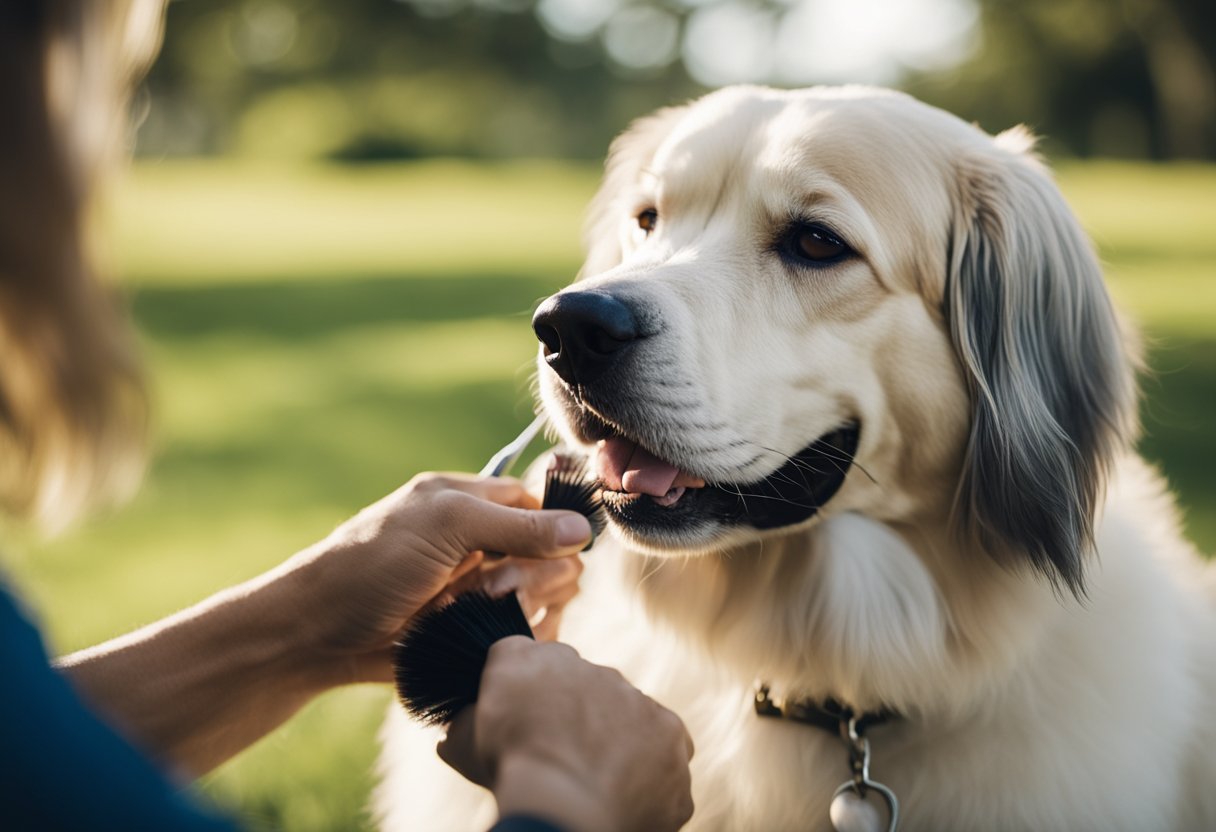
How should the grooming approach differ for a senior dog compared to a younger dog?
When grooming a senior dog, it is important to be gentle and patient. Older dogs may have sensitive skin, joint pain, and other health issues that require a more delicate touch. Additionally, their fur may be thinner or more fragile, so it’s important to use grooming tools that are appropriate for their coat type and condition. It’s also important to take breaks and not overwork your senior dog during grooming sessions.
What are the signs of stress to look out for in a senior dog during grooming?
Senior dogs may become stressed during grooming, especially if they are experiencing discomfort or pain. Signs of stress to look out for include panting, trembling, whining, growling, and attempting to escape. If you notice any of these signs, it’s important to stop grooming and give your dog a break.
What specific considerations are there for handling coat changes in older dogs?
Older dogs may experience changes in their coat, such as thinning, matting, or greying. When grooming a senior dog, it’s important to use grooming tools that are appropriate for their coat type and condition. For example, a slicker brush may be too harsh for a senior dog with thinning fur, while a comb may be more appropriate. Additionally, it’s important to be gentle and patient when working through tangles or mats in senior dogs’ coats.
Are there any special techniques to use when grooming a senior dog with mobility issues?
Senior dogs with mobility issues may require special accommodations during grooming. For example, you may need to use a non-slip mat or towel to prevent them from slipping or falling. Additionally, you may need to groom them in a seated or lying position to reduce strain on their joints.
What are the risks of sedation for grooming in older dogs, and how can they be mitigated?
Sedation for grooming in older dogs can be risky, as it can cause complications such as respiratory depression, hypotension, and cardiac arrest. To mitigate these risks, it’s important to only use sedation under the guidance of a veterinarian, and to closely monitor your senior dog’s vital signs during the grooming process.
How often should a senior dog be professionally groomed, and what factors determine this?
The frequency of professional grooming for senior dogs depends on their individual needs and coat type. Some senior dogs may require more frequent grooming due to health issues or coat changes, while others may require less frequent grooming. It’s important to consult with your veterinarian or professional groomer to determine the appropriate grooming schedule for your senior dog.
